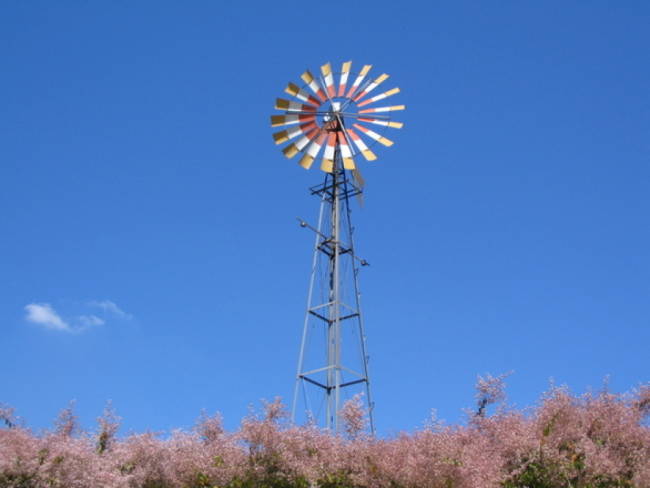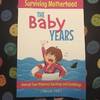PSA: What to do (and be safe) in High Winds - Watches, Warnings, & Advisories, OH MY!

With winter weather can come high winds. High winds are also a concern during severe weather season, although wind damage can occur at any time. Please be safe with these ideas and tips from NOAA.GOV.
Wind Safety
High winds can occur during a severe thunderstorm, with a strong weather system, or can flow down a mountain. When winds are sustained at 40-50 mph, isolated wind damage is possible. Widespread significant wind damage can occur with higher wind speeds. During strong thunderstorms, straight line wind speeds can exceed 100 mph. High winds can blow objects around and pose a significant threat to your safety. Understanding the risks can help you prepare for these events.
Wind Warnings, Watches and Advisories
The National Weather Service issues a number of Watches, Warnings and other products to alert the public about high wind events.
High Wind Warning: Take Action! Sustained, strong winds with even stronger gusts are happening. Seek shelter. If you are driving, keep both hands on the wheels and slow down. NWS offices issue this product based on local criteria.
High Wind Watch: Be Prepared! Sustained, strong winds are possible. Secure loose outdoor items and adjust plans as necessary so you're not caught outside. NWS offices issue this product based on local criteria.
Wind Advisory: Take Action! Strong winds are occurring but are not so strong as to warrant a High Wind Warning. Objects that are outdoors should be secured and caution should be taken if driving. NWS offices issue this product based on local criteria.
Dust Storm Warning: Take Action! A Dust Storm Warning is issued when visibility of 1/2 mile or less due to blowing dust or sand, and wind speeds of 30 miles an hour or more
Severe Thunderstorm Watch: Be Prepared! A Severe Thunderstorm Watch is issued when severe thunderstorms are possible in and near the watch area. Winds 58 mph or higher and/or hail 1inch or larger are possible in a severe thunderstorm. Secure items outdoors that may blow around in high winds. Stay informed and be ready to take action.
Severe Thunderstorm Warning: Take Action! A Severe Thunderstorm Warning is issued when severe thunderstorms is happening or is imminent in the warning area. Severe thunderstorms have wind 58 mph or higher and/or hail 1 inch or larger. Seek shelter inside a sturdy building, away from windows.
Gale Warning: Take Action! Gale Warnings are issued for locations along the water when one or both of the following conditions is expected to begin within 36 hours and is not directly associated with a tropical cyclone: sustained winds of 34 to 47 knots (39 to 55 mph) or frequent gusts (duration of two or more hours) between 34 knots and 47 knots. Make sure your vessel is secure in port.
Hurricane Force Wind Warning: Hurricane Force Wind Warnings are issued for locations along the water when one or both of the following conditions is expected to begin within 36 hours and not directly associated with a tropical cyclone: sustained winds of 64 knots or greater or frequent gusts (duration of two or more hours) of 64 knots (74 mph) or greater. Make sure your vessel is secure in port.
Before a High Wind Event:
Trim tree branches away from your house and powerlines.
Secure loose gutters and shutters.
Identify an interior room of your house, such as a basement or interior bathroom, that you can take shelter in during high wind warnings.
If you live in a mobile home, identify a sturdy building you can go to if NWS issues a high wind or severe thunderstorm warning.
Update your emergency kit and be sure to include enough food and water to last for 3 days for each person in your home.
Make a list of items outside your home you will need to tie down or put away so that they don't blow away or fly through a window. When NWS issues a high wind or severe thunderstorm watch, immediately secure these items to avoid damage or injury once the wind starts picking up.
During a High Wind Event:
Take Shelter
Immediately go inside a sturdy building during a high wind warning or severe thunderstorm warning and move to an interior room or basement.
If you are in a mobile home, move to a sturdy building before the winds pick up or the storm system reaches your location.
Listen to the local news or NOAA Weather Radio for updates.
If Caught Outside or Driving
Take shelter in your car if you are not near a sturdy building. If possible, drive to a nearby sturdy building. Otherwise, move your car to a location where it is less likely to be hit by falling trees or powerlines.
If no shelter is available avoid trees, power lines, and the side of the road. Keep in mind that power lines that are laying on the ground may be live. Do not go near them! Try to find a place that will block blowing or falling debris.
If you are driving and aren't near a sturdy building, hold the steering wheel with both hands and slow down.
Keep a distance from high profile vehicles such as trucks, buses and vehicles towing trailers. One strong gust of wind can be enough to flip one of these trailers onto its side.
During a Dust Storm or Santa Ana Winds and Wildfires
Get indoors. Close all windows and turn off all AC units.
If driving, pull your vehicle off the pavement as far as possible, stop, turn off lights, set the emergency brake, take your foot off of the brake pedal to be sure the tail lights are not illuminated. If you can't pull off the roadway, proceed at a speed suitable for visibility, turn on lights and sound horn occasionally. Use the painted center line to help guide you. Look for a safe place to pull off the roadway. Never stop on the traveled portion of the roadway.
If you are in an area subject to Santa Ana winds or wildfires, be prepared to take precautions against wildfires. Learn more at weather.gov/fire.
After a High Wind Event:
Do not go near downed power lines. Report downed power lines to the police.
Continue to listen to the local news and NOAA Weather Radio for updates following the storm.
If you lose power and are using a generator, be sure to review generator safety tips.
Be careful when handling debris that may have blown into your yard.
What's the highest winds you have experienced?



















Comments
Chad
www.mosaicslab.com